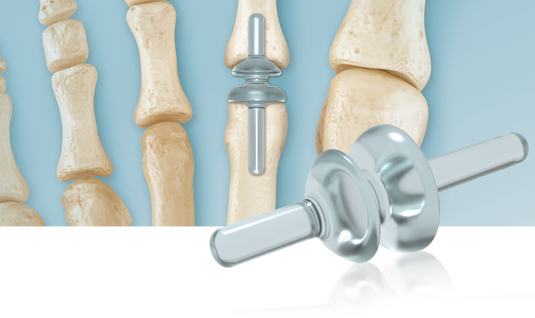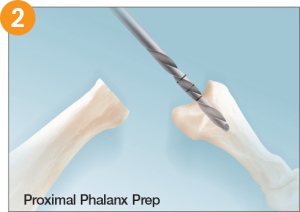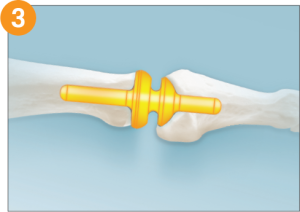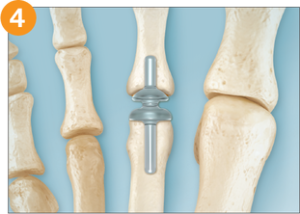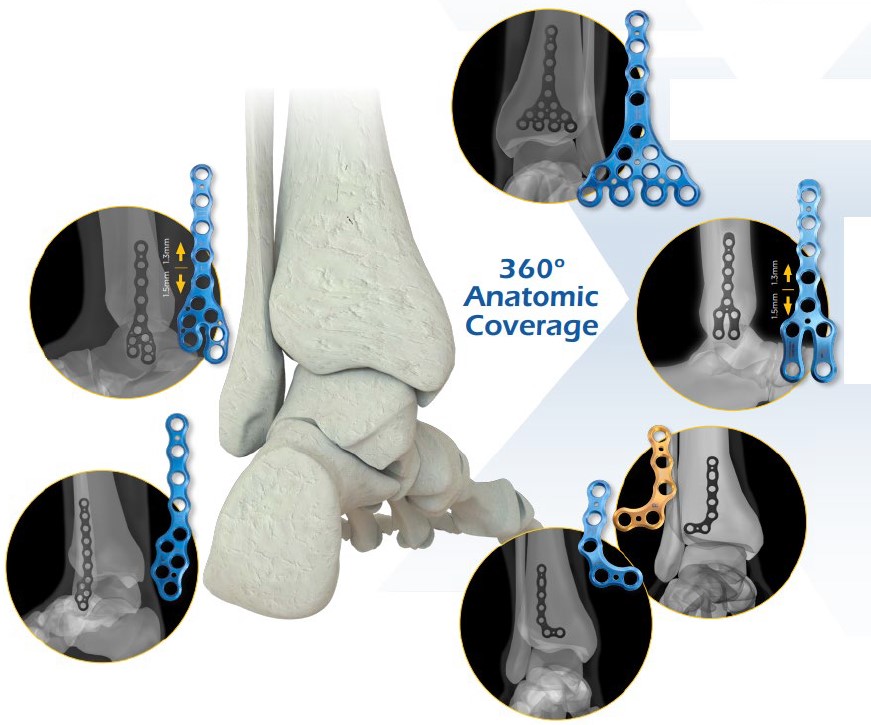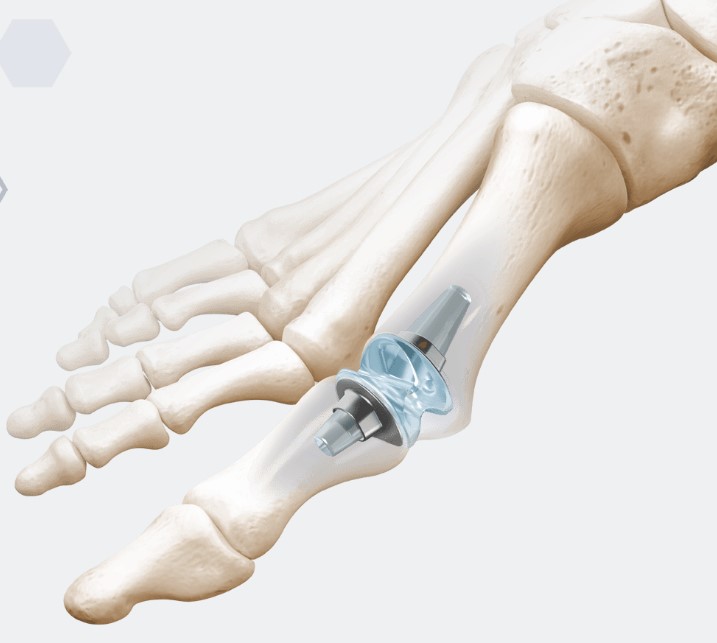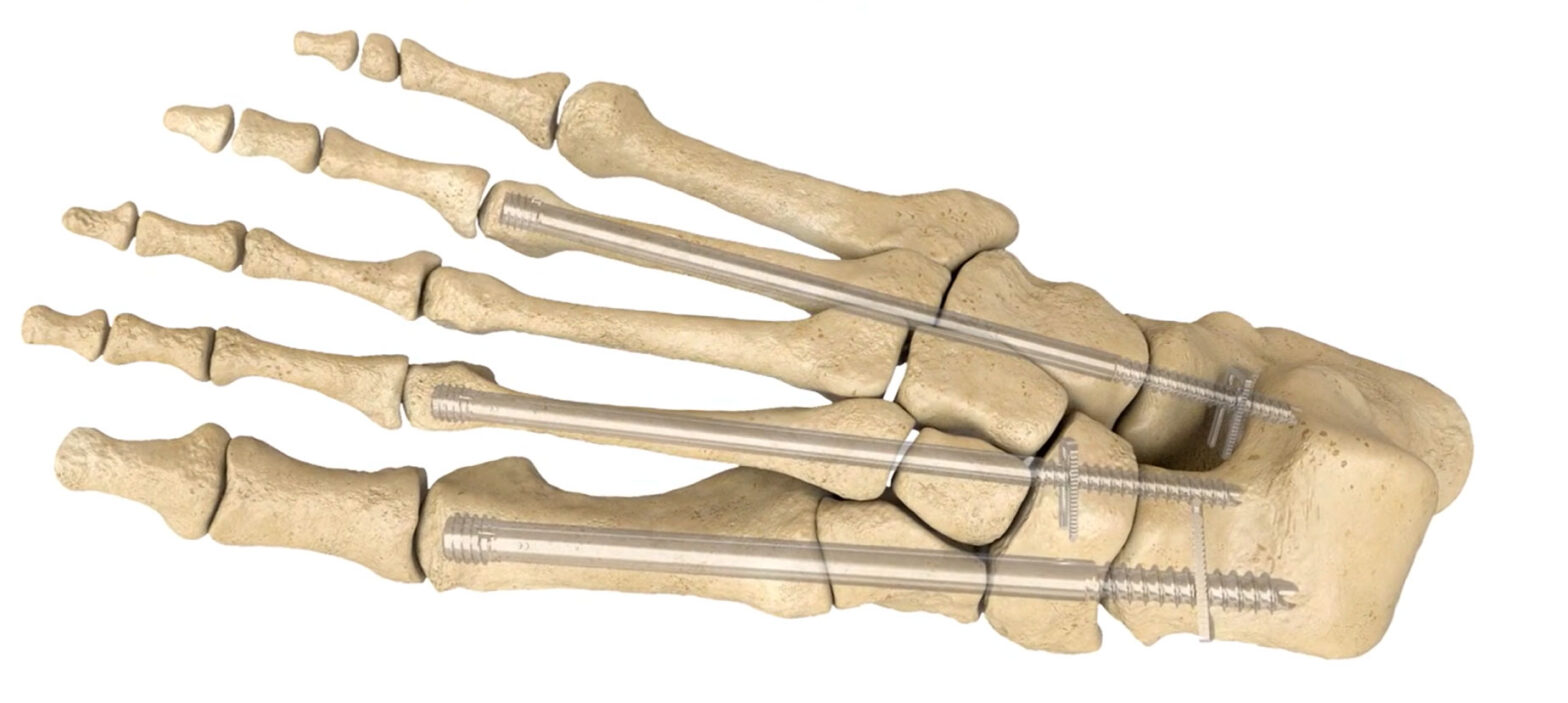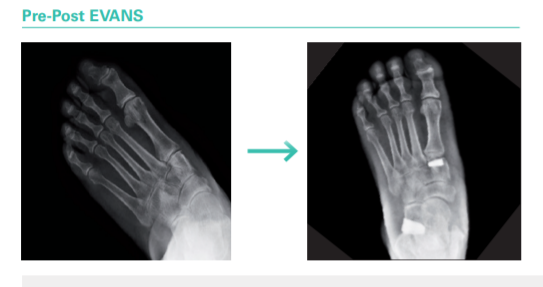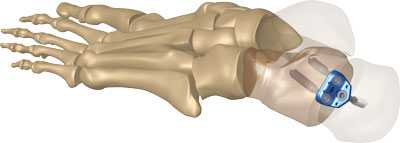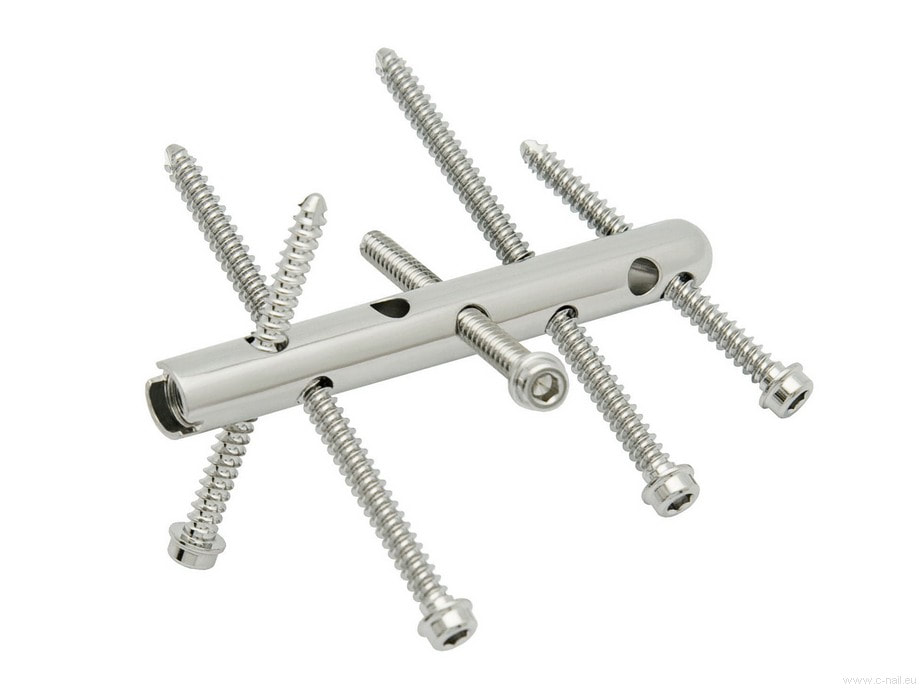OsteoSinter® EVANS and COTTON wedges
The wedges are intended to be used as an implant specifically designed for Evans procedures (for lateral foot column lengthening) or Cotton (improve the inclination of the first radius and avoid overloading the external column). These wedges allow very precise control of the amount of lengthening or declination of osteotomies.
OsteoSinter® EVANS and COTTON wedges are delivered with a single-use and recyclable surgical instrument kit, made of Polyamide grade 12, which contributes to a precise implantation of the product. The product is presented unitarily packed in blister and sterilized with gamma radiation.
OsteoSinter® EVANS and COTTON wedges are metallic implants and therefore do not present reabsorption issues. The OsteoSinter® EVANS and COTTON wedges and their single-use related accessories reduce the surgery time compared to unconfigured allografts, because:
They do not require prior defrosting.
Direct placement, without carving or on-site adjustment.
They provide greater precision.
They facilitate reproducibility.
No sterilization or instrument treatment is required.
They do not need a fixing plate.
Discover More
